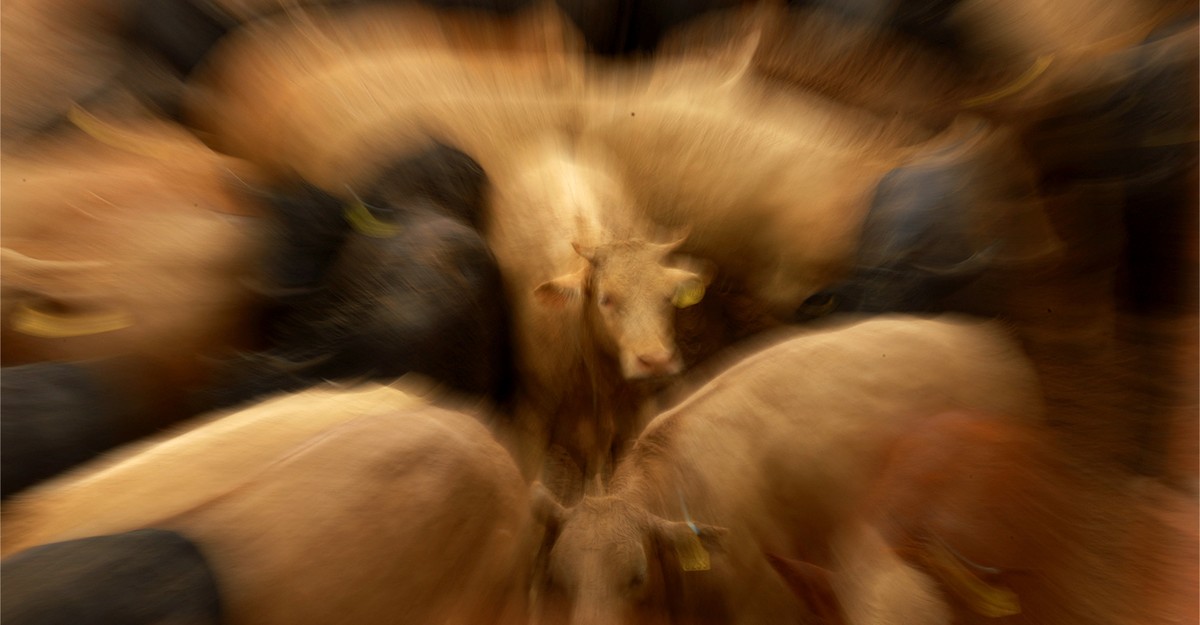Man-Eating Screwworms: What You Need To Know About This Invasive Species

Welcome to your ultimate source for breaking news, trending updates, and in-depth stories from around the world. Whether it's politics, technology, entertainment, sports, or lifestyle, we bring you real-time updates that keep you informed and ahead of the curve.
Our team works tirelessly to ensure you never miss a moment. From the latest developments in global events to the most talked-about topics on social media, our news platform is designed to deliver accurate and timely information, all in one place.
Stay in the know and join thousands of readers who trust us for reliable, up-to-date content. Explore our expertly curated articles and dive deeper into the stories that matter to you. Visit Best Website now and be part of the conversation. Don't miss out on the headlines that shape our world!
Table of Contents
Man-Eating Screwworms: What You Need to Know About This Invasive Species
A gruesome image, isn't it? The term "man-eating screwworm" conjures up nightmares. But the reality, while serious, is less sensationalized than the name suggests. This invasive species, Cochliomyia hominivorax, poses a significant threat to livestock and, while rare, can affect humans. Understanding this pest is crucial for protecting both animals and ourselves.
The New World screwworm fly, as it's also known, is a parasitic fly whose larvae feed on living tissue. This isn't just a nuisance; it's a potentially deadly infestation. Unlike many insects that feed on decaying matter, screwworms actively seek out wounds and open sores on warm-blooded animals to lay their eggs. Once hatched, the maggots burrow into the flesh, causing significant damage and potentially leading to sepsis and death if left untreated.
The Life Cycle of a Screwworm: Understanding the Threat
The life cycle of the screwworm is relatively short, but incredibly destructive:
- Egg Laying: Adult female screwworms seek out a host – typically livestock like cattle, sheep, and goats, but also potentially humans with open wounds – and deposit their eggs in moist areas like cuts, sores, or even natural orifices.
- Larval Stage: Within 12-24 hours, the eggs hatch into larvae, which begin to feed on living tissue. These larvae grow rapidly, causing significant tissue damage and bleeding. This feeding stage lasts for 5-7 days.
- Pupation: The mature larvae then drop to the ground to pupate, forming a hard protective casing. This stage lasts for approximately 6-10 days.
- Adult Fly: Finally, an adult screwworm fly emerges, ready to mate and begin the cycle anew.
This rapid life cycle means infestations can escalate quickly, requiring prompt and effective treatment.
Impact on Livestock and the Economy
The impact of screwworm infestations on livestock production is devastating. Infected animals experience significant weight loss, reduced productivity, and potentially death. This translates to substantial economic losses for farmers and ranchers. The cost of treatment, veterinary care, and potential animal loss can cripple agricultural businesses. Eradication and control programs are therefore vital for economic stability in affected regions.
Screwworms and Humans: A Rare but Serious Risk
While screwworms primarily target livestock, they can also infest humans, particularly those with untreated wounds or chronic skin conditions. These infestations are typically found in neglected wounds or in individuals living in areas with high screwworm populations. Human infestations, while rare, require immediate medical attention and treatment to prevent serious complications.
Prevention and Control Measures
Effective control of screwworms requires a multifaceted approach:
- Early detection: Regular inspection of livestock for wounds and signs of infestation is critical.
- Wound care: Prompt treatment of any wounds on both livestock and humans is essential to prevent screwworm infestation.
- Sterile Insect Technique (SIT): This method involves releasing large numbers of sterile male screwworms into the environment, reducing the breeding population. This has been highly successful in many eradication programs.
- Chemical control: Insecticides can be used to control screwworm populations, but careful application is necessary to minimize environmental impact.
Staying informed about screwworm infestations in your area is key. Contact your local agricultural authorities or veterinary services for advice and support if you suspect an infestation. Early detection and intervention are crucial for protecting both livestock and human health. Learning about this invasive species is a crucial step in safeguarding our communities and economies.

Thank you for visiting our website, your trusted source for the latest updates and in-depth coverage on Man-Eating Screwworms: What You Need To Know About This Invasive Species. We're committed to keeping you informed with timely and accurate information to meet your curiosity and needs.
If you have any questions, suggestions, or feedback, we'd love to hear from you. Your insights are valuable to us and help us improve to serve you better. Feel free to reach out through our contact page.
Don't forget to bookmark our website and check back regularly for the latest headlines and trending topics. See you next time, and thank you for being part of our growing community!
Featured Posts
-
 American Music Awards 2025 Winners Your Ultimate Guide
May 28, 2025
American Music Awards 2025 Winners Your Ultimate Guide
May 28, 2025 -
 Us Tennis Prodigy Named After Moms Profession Challenges Top 3
May 28, 2025
Us Tennis Prodigy Named After Moms Profession Challenges Top 3
May 28, 2025 -
 Alexandra Daddarios Naked Lace Dress Red Carpet Boldness
May 28, 2025
Alexandra Daddarios Naked Lace Dress Red Carpet Boldness
May 28, 2025 -
 French Open Round 1 In Depth Preview Of Zverev Vs Tien And Mensik Vs Muller
May 28, 2025
French Open Round 1 In Depth Preview Of Zverev Vs Tien And Mensik Vs Muller
May 28, 2025 -
 Dont Fall Victim New Text Message Scam Targeting Georgia Drivers
May 28, 2025
Dont Fall Victim New Text Message Scam Targeting Georgia Drivers
May 28, 2025
Latest Posts
-
 Rhode Skin Hailey Biebers Brand Sold To E L F Cosmetics For 1 Billion
May 30, 2025
Rhode Skin Hailey Biebers Brand Sold To E L F Cosmetics For 1 Billion
May 30, 2025 -
 Witness To Terror Israeli Hostages Account Of Hamas Torture On Cnn
May 30, 2025
Witness To Terror Israeli Hostages Account Of Hamas Torture On Cnn
May 30, 2025 -
 Holger Runes Third Round Berth At French Open A Comprehensive Match Report
May 30, 2025
Holger Runes Third Round Berth At French Open A Comprehensive Match Report
May 30, 2025 -
 Sheinelle Jones And Family Mourn Loss Of Husband Uche Ojeh Today Confirms
May 30, 2025
Sheinelle Jones And Family Mourn Loss Of Husband Uche Ojeh Today Confirms
May 30, 2025 -
 Rune Advances To French Open Third Round After Straight Sets Victory
May 30, 2025
Rune Advances To French Open Third Round After Straight Sets Victory
May 30, 2025
